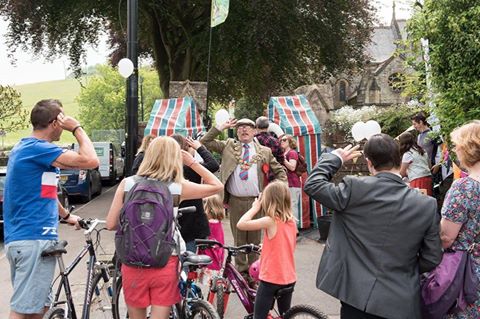Chloe Edgell reports on how her organisation, DNA arts, helped to benefit our community with support from Radstock and Westfield Big Local:
Please give us a statement of how it has helped/improved/impacted on our local community:
Round-about Radstock 2016 was yet another sunny, happy day in the town centre. 400 people took part in the ‘arts passport’ trail paid for by the Big Local fund with 1000 people taking part in the event which brings creative play and theatrical exploration into the heart of the Radstock community. It was yet another fantastic day where people from across the community of all ages came together; the youngest audience-goer was 10 months old and the oldest 85! The arts passport and free pizza prize was a crowd favourite and got a wide range of people to try things they might not usually, teaching new skills and giving new opportunities to Radstock. Local performers, artists and volunteers came together to form the programme. Showing the talents of our town and celebrating all that is on offer; from latin dance classes to musicians, storytellers and the local radio station were all represented. Local dance teacher said “Thank you for inviting me to take part in such an exciting and valuable community project”. The event serves as a great example of what can be achieved when the community work together; one audience member said “Viva Radstock! It’s getting better all the time!”.
Please tell us a bit about why you chose to help Radstock and Westfield? (Why did you set up the project, why do you care about the area, etc.?):
I’m Project Manager of DNA arts, a community arts project commissioned by Bath and North East Somerset Council to engage the community of Radstock specifically families in the area in the arts. This is inclusive of Westfield, Writhlington, Haydon, Clandown and Tyning. Radstock was identified as an area of need in the constituency and there was a desire to see innovative, collaborative and exciting projects and events take place in the town. We, DNA arts believe that regeneration and arts development work best when it comes from the bottom up – local people responding to local issues with local solutions. Not imposing officially sanctioned creativity, but giving people the language and the tools to do it for themselves. We try to do this through DNA arts and create real opportunity for local people to be part of the creativity and social life of their neighbourhoods
Also, I was born and bred in Radstock; it’s my hometown and I’m happy to be contributing to the life of the place. It’s a wonderful place to live.

